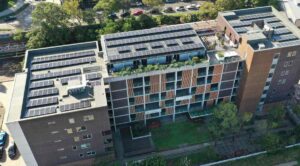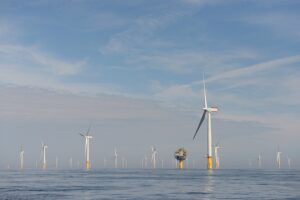Swedish power company Vattenfall has committed to recycling all dismantled wind turbine blades by 2030 and is lining up a range of partnerships that will see turbine blades turned into skis, snowboards, and construction materials for solar farms.
Having set a target to recycle 50% of its dismantled wind turbine blades by 2025 and 100% by 2030, Vattenfall recently highlighted the varied ways its turbine blades are contributing to a new circular economy.
In a recent blog post on the company’s website, Gustav Frid, the senior environment and sustainability specialist at Vattenfall, says the company is recycling turbine blades and making them into new products – starting with the Irene Vorrink wind farm.
“First of all, we want to learn from this process and see which companies are suitable to help us recycle the wind blades,” said Frid.
“We believe that there is no single solution for this, but rather a number of different ones. Because Vattenfall has proven to be a leader in sustainability in recent years, many companies want to collaborate with us, and they are contacting us.”
One of the companies using recycled materials from wind turbine blades is Norwegian company Gjenkraft, which turns end of life composite products into skis and snowboards.
Gjenkraft, which already boasts partnerships with other major wind energy companies such as Vestas, has developed a recycling technology to recycle glass and carbon fiber from wind turbine blades, and is using the material to create skis and snowboards.
“We were looking for partners for our wind blade recycling project, came into contact with Vattenfall and since then we have been in constant contact with Gustav Frid about the progress of the work in our project,” said Marcin Rusin, co-owner at Gjenkraft.
“When the wind turbines of the Irene Vorrink wind farm were dismantled, we were one of the first to offer to recycle the wind blades.
“The blades consist not only of resin and glass or carbon fibre, but also of balsa wood, PVC or PET foam, other polymers and metals. It is almost impossible to separate the individual components, so they have to be processed together. This complicates the recycling process and the possibility of recovering residual value from the blades.
“In the recycling process, we can adjust the parameters to obtain the properties that our customers expect from our products. Our products are used again to make skis or snowboards and other products that contain glass fibres and carbon fibres.”
Another company eyeing wind turbine blades as a potential source of material is BillionPeople, a Dutch company that recycles rotor and wind turbine blades to create materials necessary to build solar farms.
“Wind turbine blades are designed to withstand extreme loads, so they consist of strong fibres of glass and carbon that are bound by duro-plastics,” said Professor Gregor Luthe, founder of BillionPeople.
“We have managed to make new duro-plastics that can be used in the construction materials of so-called agriphotovoltaics, solar panels placed above or among agricultural products. With our material, we replace the steel and aluminium of the construction. Both these raw materials use a lot of energy in their production and are now also very scarce due to the war in Ukraine.”
Finally, Vattenfall has also provided old wind turbine blades to educators at the MBO College Airport in the Netherlands, a vocational school for airport and logistics services, aviation technology, and travel and hospitality.
“We want to offer our students an even broader field of knowledge and that’s how we came to wind turbines, because wind blades naturally have a lot to do with aircraft technology,” said René de Moor, an aircraft systems teacher MBO College Airport.
“We contacted Vattenfall and told them we wanted to train people for them. When asked what we needed for that, our answer was: knowledge, apprenticeships, and equipment. We had already bought a small nacelle simulator and we were still looking for other parts of the wind turbine.
“One of the blades will be placed at MBO College Airport, where we will look specifically at the construction of the wind blade. How is it put together and how does it work exactly? The second wind blade will go to the Drone Engineering & Operations course in Valkenburg. They will use drones to inspect the wind blade. The drone can also attach itself to the blade and conduct minor repairs with a spay.”










